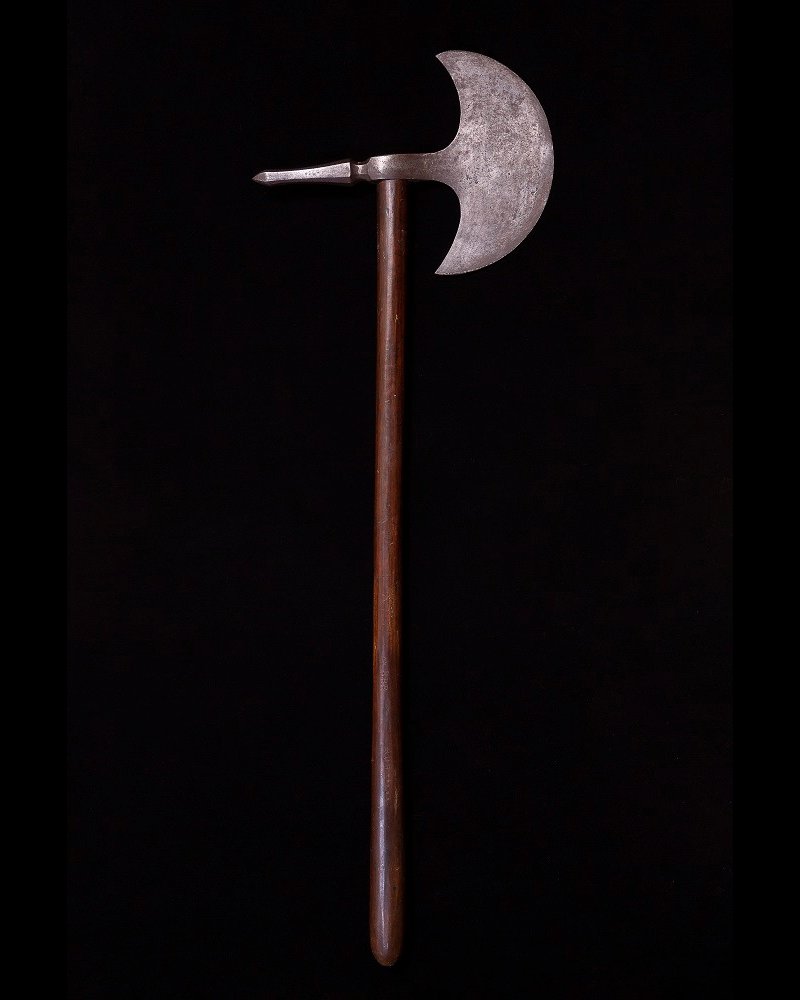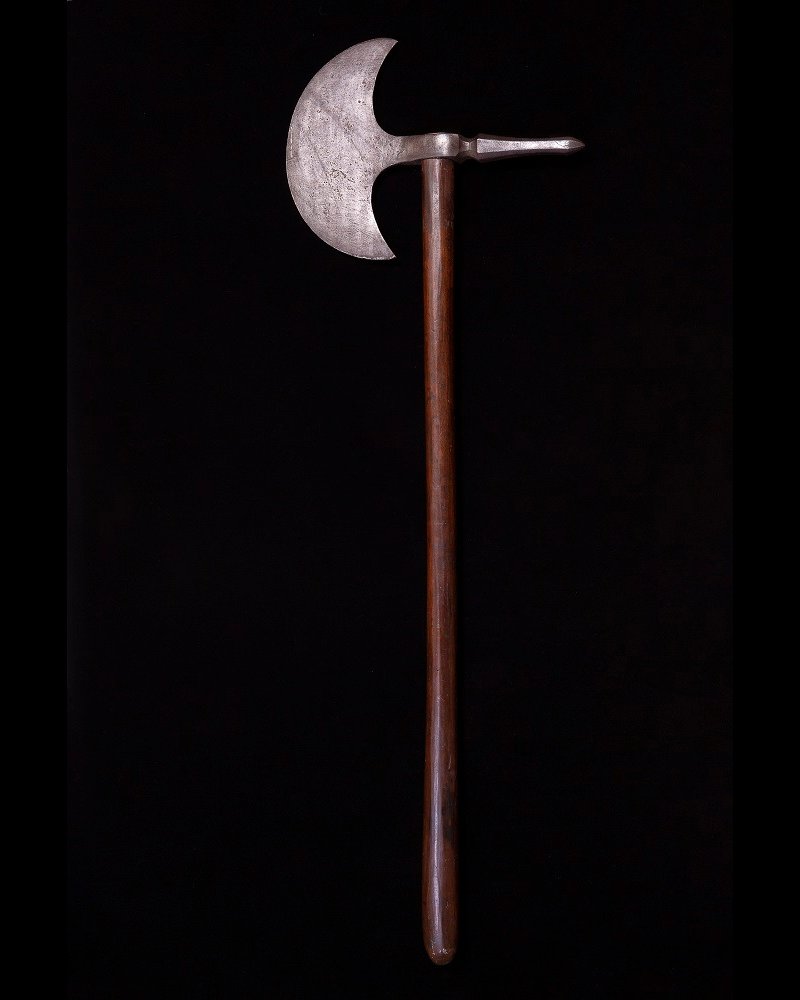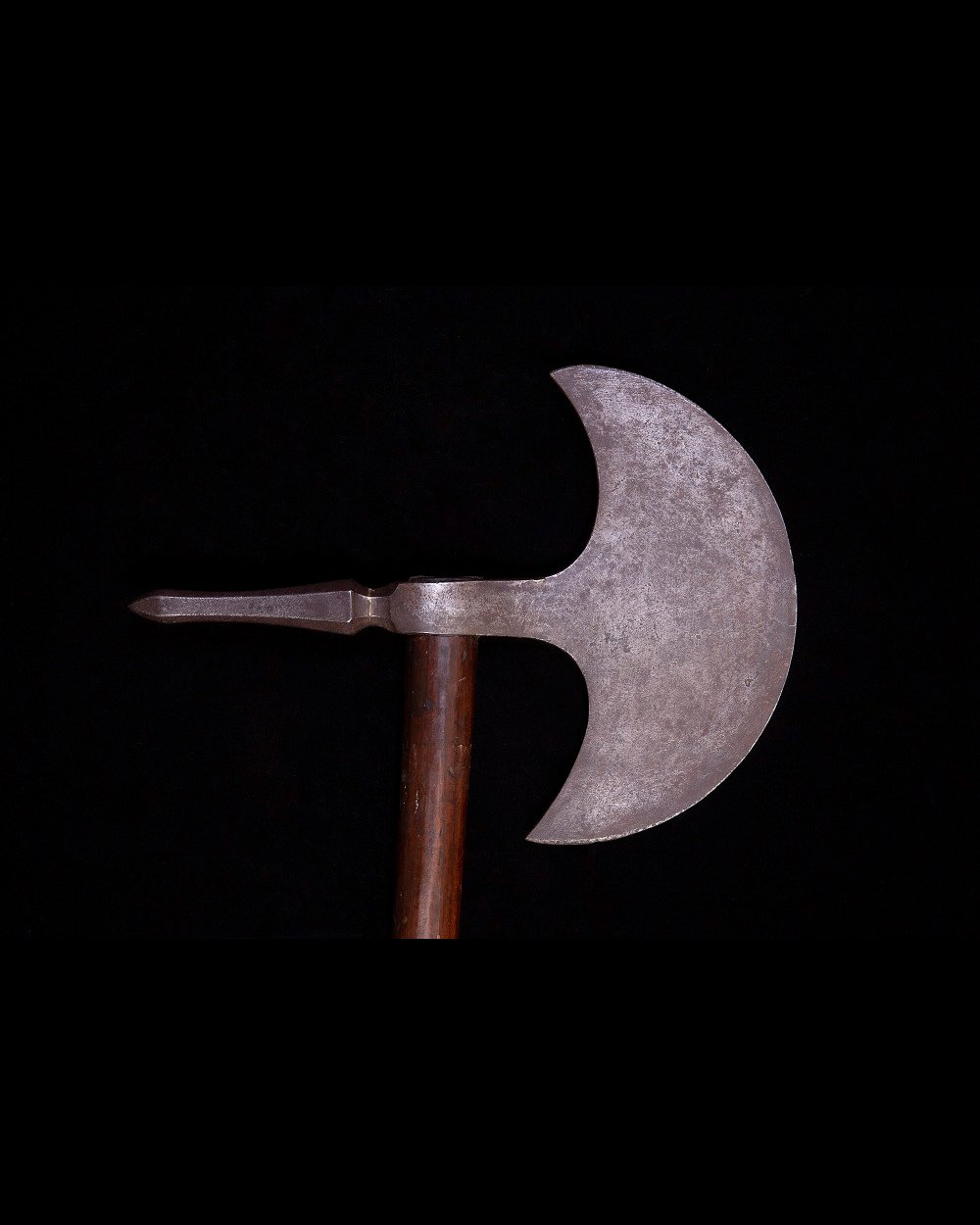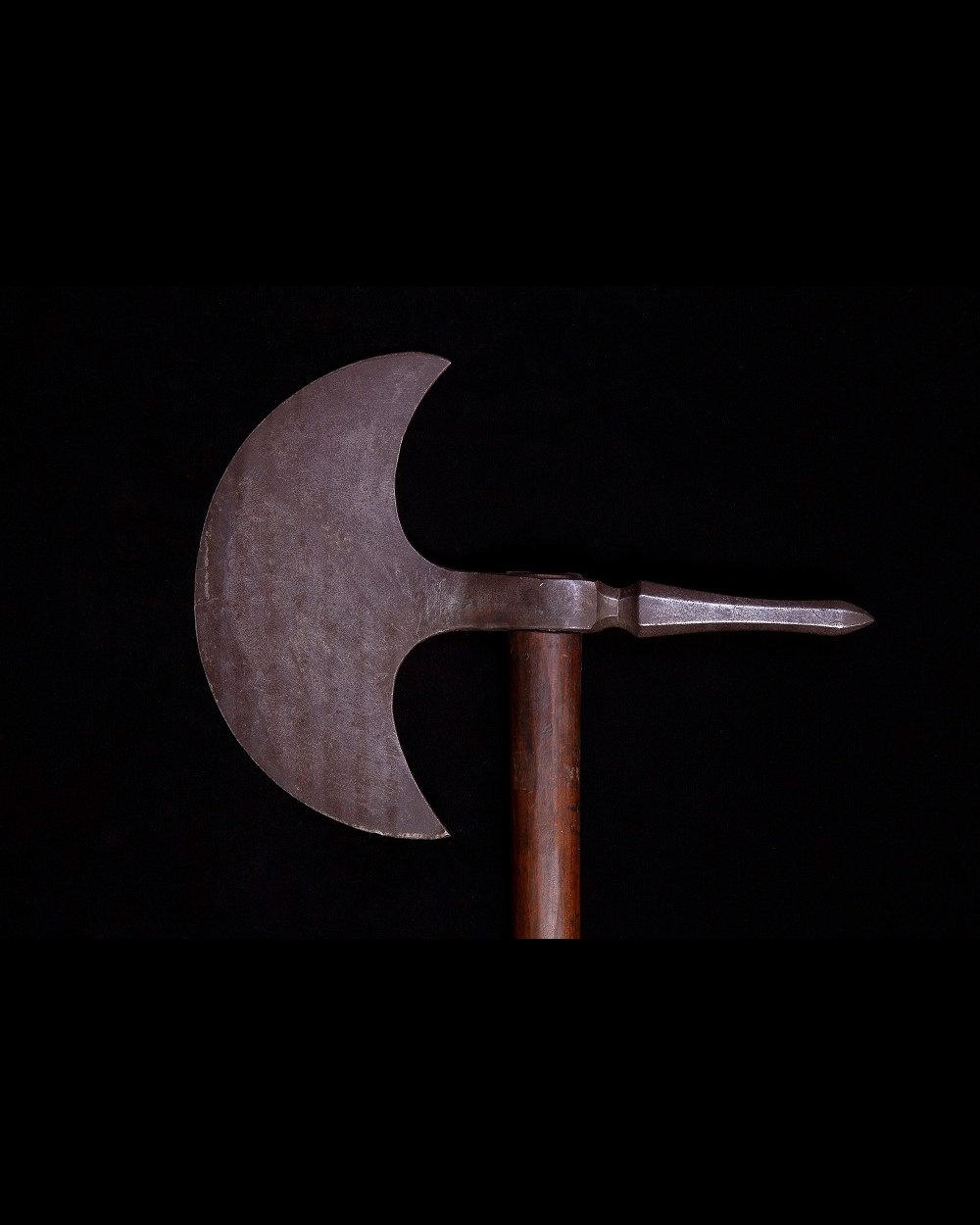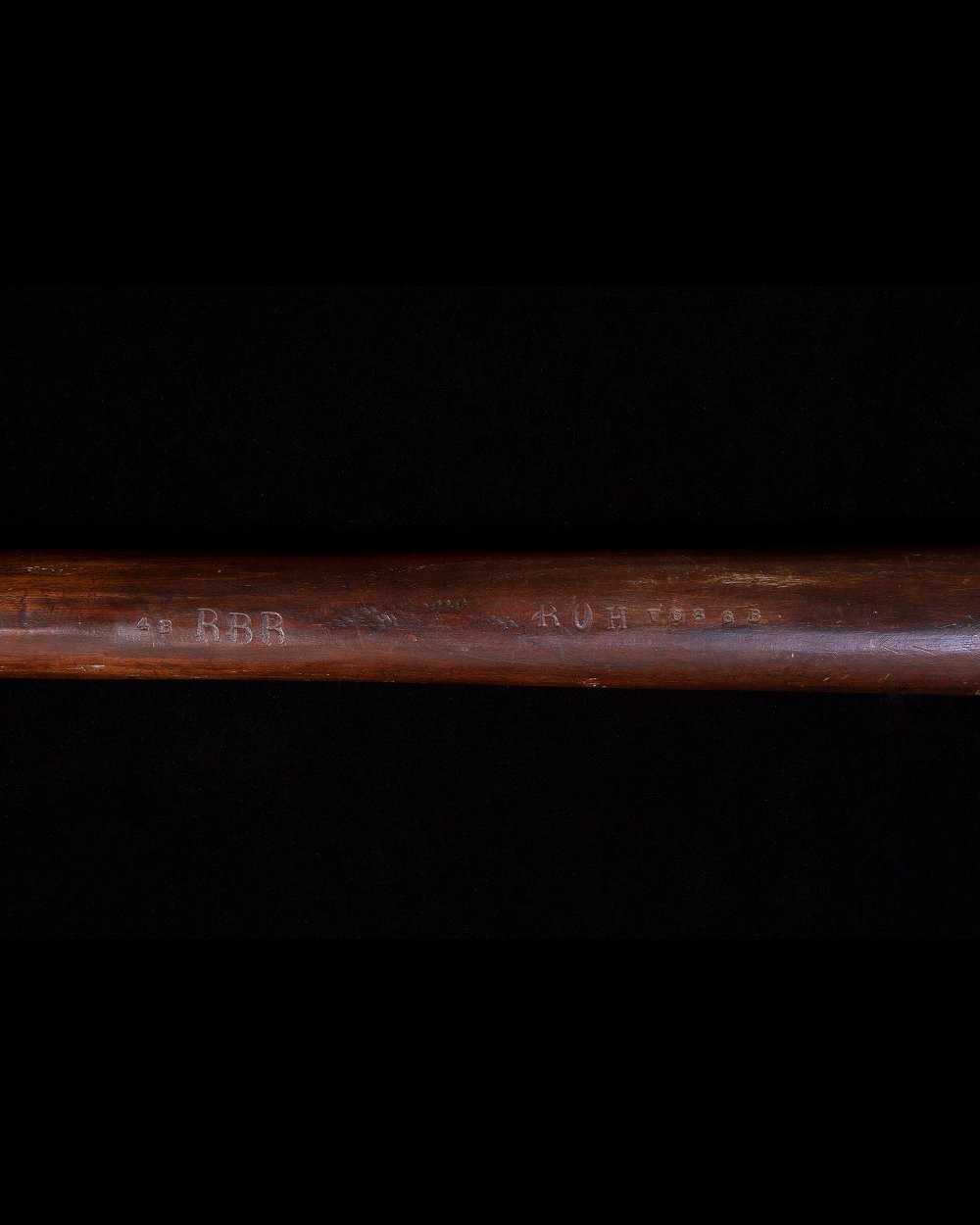19th Century Farriers Axe
A large military issue Farriers Axe unusual farriers axe, probably dating from the early to mid 19th Century. The axe head measures 24cm by 17cm wide and the spike is 13cm long. The shaft is 89cm long. There are a series of unidentified military stamps towards the base of the shaft
Although these could be used in an emergency for fighting, their primary use was logistical: the branded hooves of deceased military horses needed to be removed in order to prove that they had indeed died. Each horse's hooves were, and still are, stamped with inventory control numbers. The farrier collected the labeled hooves and made a report. The other end is for dispatching any horses found to be suffering
A large military issue Farriers Axe unusual farriers axe, probably dating from the early to mid 19th Century. The axe head measures 24cm by 17cm wide and the spike is 13cm long. The shaft is 89cm long. There are a series of unidentified military stamps towards the base of the shaft
Although these could be used in an emergency for fighting, their primary use was logistical: the branded hooves of deceased military horses needed to be removed in order to prove that they had indeed died. Each horse's hooves were, and still are, stamped with inventory control numbers. The farrier collected the labeled hooves and made a report. The other end is for dispatching any horses found to be suffering
A large military issue Farriers Axe unusual farriers axe, probably dating from the early to mid 19th Century. The axe head measures 24cm by 17cm wide and the spike is 13cm long. The shaft is 89cm long. There are a series of unidentified military stamps towards the base of the shaft
Although these could be used in an emergency for fighting, their primary use was logistical: the branded hooves of deceased military horses needed to be removed in order to prove that they had indeed died. Each horse's hooves were, and still are, stamped with inventory control numbers. The farrier collected the labeled hooves and made a report. The other end is for dispatching any horses found to be suffering

